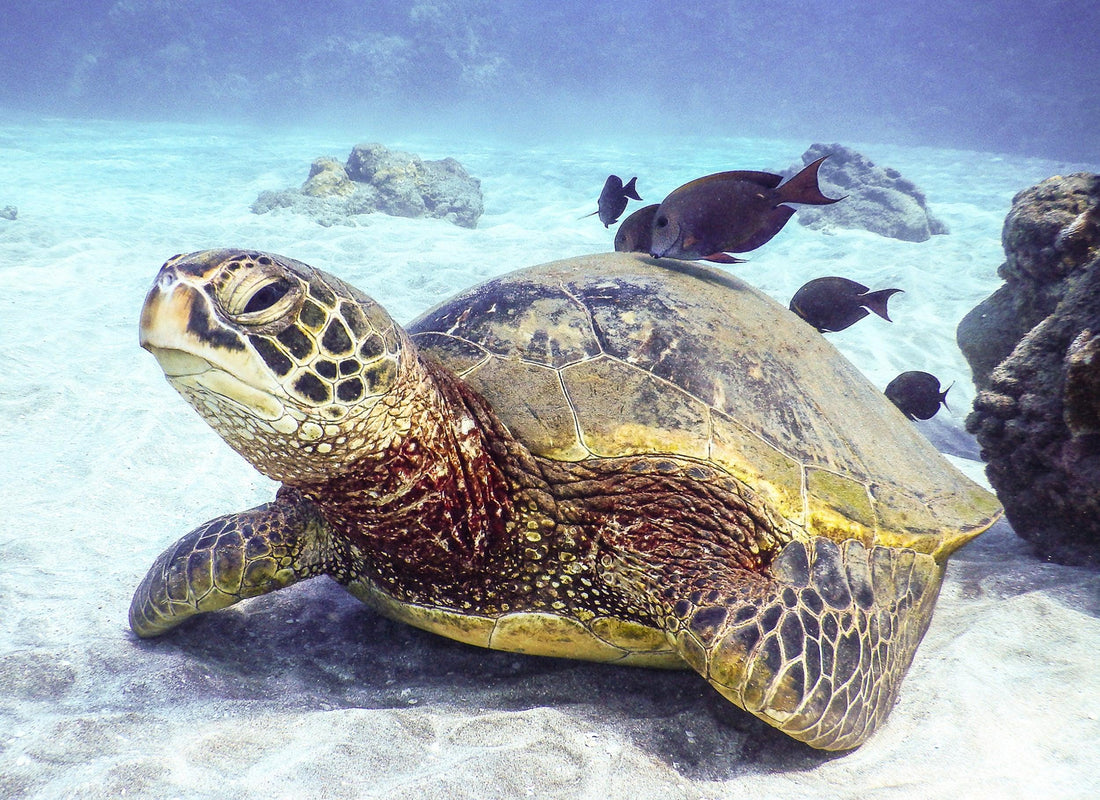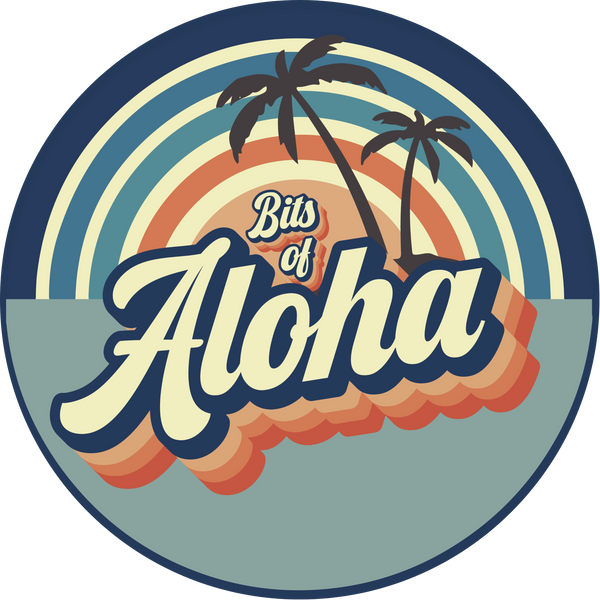
Snorkeling Responsibly with Sea Turtles in Hawaiʻi
Share
Snorkeling Responsibly with Sea Turtles (Honu) in Hawaiʻi: Where to Go and How to Do It Right
For many visitors to the Hawaiian Islands, swimming alongside a sea turtle — or honu — is a bucket-list moment. Graceful, ancient, and symbolic of wisdom and longevity in Hawaiian culture, these gentle creatures glide through the reef with an effortless calm that leaves lasting impressions.
But as turtle encounters have become more common, so have concerns about their well-being. If you’re hoping to see sea turtles while snorkeling in Hawaiʻi, it’s essential to do so respectfully and responsibly. From choosing the right locations to supporting eco-conscious tours, this guide will help you enjoy an unforgettable honu encounter — without putting them at risk.
Honu in Hawaiʻi: Species and Protection
Hawaiian waters are home to several sea turtle species, but the most commonly seen is the Hawaiian green sea turtle (Chelonia mydas), known locally as honu. These turtles can grow up to 4 feet long and weigh over 300 pounds.
Less commonly, you may spot the endangered hawksbill turtle (‘ea), primarily around Hawaiʻi Island.
All sea turtles in Hawaiʻi are protected under:
-
The U.S. Endangered Species Act
-
The Marine Mammal Protection Act
-
Hawaiʻi state law
It is illegal to touch, harass, or feed turtles in the wild. Recommended distance: Stay at least 10 feet (3 meters) away at all times — on land and in the water.
Best Islands and Areas to See Sea Turtles While Snorkeling
You don’t need to dive deep to find honu — they often feed in shallow reef zones and rest on beaches. The key is finding locations where turtles frequent but aren’t actively nesting or being overwhelmed by tourists.
Here are the best places to responsibly snorkel with turtles, by island:
 Oʻahu
Oʻahu
Laniakea Beach (Turtle Beach), North Shore
-
Known for frequent turtle sunbathing
-
Good for land-based viewing, not snorkeling
-
Tip: Be extremely cautious — this area gets overcrowded and is under pressure from overtourism
Electric Beach (Kahe Point), West Oʻahu
-
Warm water outflow attracts turtles and fish
-
Great for experienced snorkelers
-
Reef drop-off can be sharp; always check ocean conditions
 Maui
Maui
Maluaka Beach (Turtle Town), South Maui
-
Calm waters, coral-rich reef
-
One of the best snorkeling spots to see turtles
-
Early mornings are less crowded
Black Rock, Kāʻanapali
-
Excellent visibility and turtle sightings
-
Often accessed via shore or by booking a catamaran snorkel cruise
 Big Island (Hawaiʻi Island)
Big Island (Hawaiʻi Island)
Kahaluʻu Beach Park, Kona
-
High honu population
-
Beginner-friendly snorkeling with tide pool areas
-
Respectful education signage on turtle protection
Honaunau Bay (Two Step)
-
Pristine snorkeling near Puʻuhonua o Hōnaunau National Historical Park
-
Turtles often spotted feeding near coral heads
 Kauaʻi
Kauaʻi
Poʻipū Beach
-
Great for both land and snorkel-based turtle sightings
-
Calm conditions during summer months
-
Lifeguarded and beginner-friendly
Anini Beach
-
Sheltered lagoon with consistent honu sightings
-
Long reef protects swimmers from waves
-
Best visited at low tide for easier visibility
Responsible Tour Operators for Snorkeling with Honu
To support conservation and ensure safe encounters, choose eco-certified or marine biologist-led tours. The best operators follow NOAA guidelines and avoid disturbing natural behavior.
 Maui Snorkel Charters
Maui Snorkel Charters
https://www.
-
Small-group tours to Turtle Town and Molokini
-
Naturalist guides explain turtle etiquette and reef health
 Hawaii Forest & Trail – Kona
Hawaii Forest & Trail – Kona
-
Educational snorkeling tours focused on marine conservation
-
Tours include reef-safe sunscreen and conservation briefings
 Sail Trilogy (Maui, Lanaʻi)
Sail Trilogy (Maui, Lanaʻi)
-
Family-owned with 50+ years of ocean stewardship
-
Marine naturalist-guided snorkeling experiences
 Holokai Catamaran (Oʻahu)
Holokai Catamaran (Oʻahu)
https://www.holokaicatamaran.
-
Turtle Canyon tours from Waikīkī
-
Certified guides provide in-water supervision and turtle education
Tips for Snorkeling Responsibly with Sea Turtles
![]() Observe from a Distance
Observe from a Distance
Maintain at least 10 feet of distance. Never chase, touch, or block a turtle’s path to the surface — they need air just like us.
![]() Use Reef-Safe Sunscreen
Use Reef-Safe Sunscreen
Avoid oxybenzone and octinoxate, which are harmful to coral reefs and marine life. Hawaiʻi law requires reef-safe formulas.
![]() Stay Calm and Move Slowly
Stay Calm and Move Slowly
Sudden movements may alarm turtles or disrupt feeding behavior. Let them come to you — or not.
![]() Avoid Nesting Beaches During Season
Avoid Nesting Beaches During Season
Turtle nesting in Hawaiʻi typically runs May through October. Avoid nighttime beach activities that may disturb nesting mothers.
![]() Pack Out Trash & Don’t Feed Wildlife
Pack Out Trash & Don’t Feed Wildlife
Litter, fishing line, and plastic bags are deadly to turtles. Feeding also disrupts natural behaviors and is illegal.
Cultural Significance of Honu in Hawaiian Traditions
In Native Hawaiian culture, honu are deeply revered as symbols of longevity, navigation, protection, and spiritual guidance. They appear in petroglyphs, oral chants (oli), and legends throughout the islands.
The honu is often associated with the Hawaiian goddess Kanaloa — guardian of the sea — and is considered a form of ‘aumākua, or ancestral spirit guide.
Treating these animals with respect is not only ecologically responsible but also culturally essential.
Final Thoughts
Swimming with honu in Hawaiʻi is a magical experience that connects you to the ancient rhythm of the islands — if it’s done with awareness and care. By choosing respectful tour operators, giving turtles space, and honoring their sacred role in local culture, you help ensure these graceful creatures continue to thrive in their ocean home.
Want help booking a responsible turtle snorkel tour or creating a custom wildlife-focused itinerary? I’m here to guide your journey through Hawaiʻi’s most awe-inspiring natural experiences.
